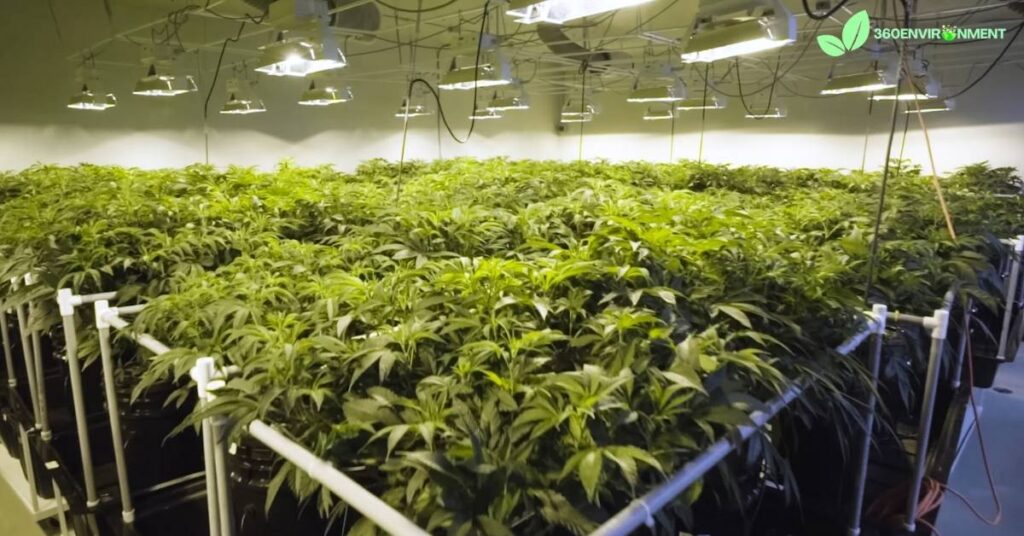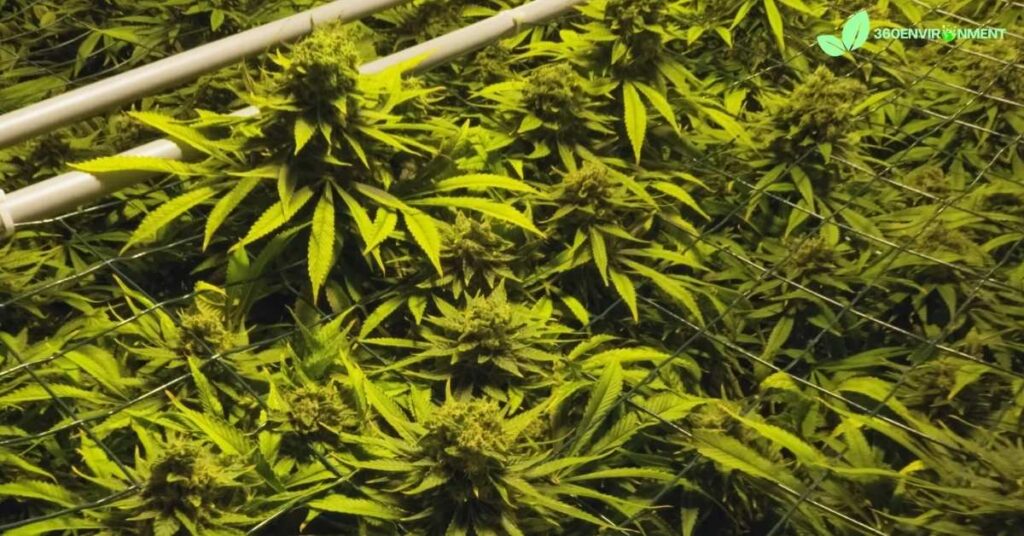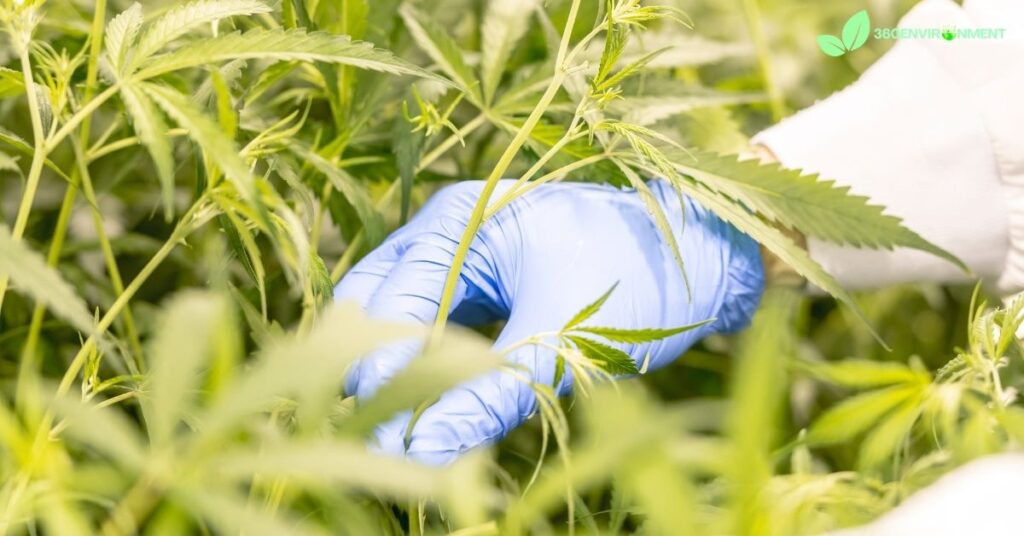Cannabis cultivation has seen a rapid surge in recent years, especially with legalization in various regions. Whether for recreational or medicinal purposes, cannabis growing has become a prominent industry. There are several cultivation methods available, but hydroponic and soil-based growing systems remain two of the most popular. A question that often arises for growers, especially those starting out, is: which is more expensive hydro or soil cannabis cultivation?
This article will delve into the environmental and economic aspects of both hydroponic and soil-based cannabis cultivation methods. We will compare their costs, environmental impacts, and overall efficiency to help both home growers and commercial cultivators make informed decisions.
1. Understanding the Basics: Hydroponic vs. Soil Cannabis Cultivation
Before we dive into the cost comparison, it’s essential to understand the fundamental differences between hydroponic and soil-based cannabis cultivation.

1.1. Hydroponic Cannabis Growing
Before answering, which is more expensive hydro or soil cannabis, let’s talk about hydroponics. Hydroponics is a method of growing plants without soil. Instead, the roots of cannabis plants are suspended in a water-based nutrient solution that provides all the essential nutrients directly to the plant. Various hydroponic systems exist, such as deep water culture (DWC), nutrient film technique (NFT), and aeroponics.
This method offers several advantages, including faster growth rates and higher yields. However, the initial setup can be costly due to the need for specialized equipment like water pumps, nutrient reservoirs, grow lights, and climate control systems.
1.2. Soil-Based Cannabis Growing
Soil-based cultivation is the traditional method of growing cannabis. Plants are rooted in soil, which provides a medium for water and nutrient absorption. The soil itself contains a variety of microorganisms and nutrients that help promote healthy plant growth.
This method is often seen as more natural and less technologically intensive, making it appealing to beginners. However, soil-based growing can be slower compared to hydroponics, and yields may vary depending on the quality of the soil and environmental conditions.
2. The Economic Costs of Hydroponic vs. Soil Cannabis Growing
When comparing which is more expensive hydro or soil cannabis, it’s essential to look at several categories of expenses: initial setup, operational costs, and potential profits.

2.1. Initial Setup Costs
2.1.1. Hydroponic Setup Costs
Hydroponic systems generally have higher upfront costs due to the following factors:
- Equipment: Hydroponic systems require water reservoirs, pumps, grow trays, and nutrient delivery systems. These components can range from a few hundred to several thousand dollars depending on the complexity of the system.
- Nutrients: Hydroponic nutrients are more specialized and must be purchased regularly, adding to the costs. While this ensures optimal growth, it also means that hydroponics can be more expensive in the long run.
- Grow Lights: Hydroponic systems often require artificial lighting, such as high-intensity discharge (HID) or LED lights, to replicate the natural growing conditions. Quality grow lights can cost upwards of $500.
- Climate Control: For indoor hydroponic setups, controlling temperature, humidity, and air circulation is crucial. This requires HVAC systems and fans, further increasing setup costs.
2.1.2. Soil Setup Costs
Soil-based growing is less expensive initially:
- Soil: Quality soil is crucial for growing cannabis. Organic soil is often preferred but is a one-time purchase. This reduces costs compared to the regular purchase of hydroponic nutrient solutions.
- Pots and Containers: These are typically less expensive compared to hydroponic systems, which require more specialized equipment.
- Outdoor Growing: If cannabis is grown outdoors, it eliminates the need for artificial lighting and climate control, significantly lowering costs. This is a major factor when considering which is more expensive hydro or soil cannabis in terms of initial setup.
2.2. Operational Costs
2.2.1. Hydroponic Operational Costs
Hydroponics can lead to higher operational costs:
- Electricity: Running water pumps, grow lights, and climate control systems consumes a significant amount of electricity, resulting in higher bills.
- Nutrients: Since plants rely on a water-based nutrient solution, growers need to purchase these regularly. Nutrient solutions are generally more expensive than fertilizers used in soil-based growing.
- Water: Hydroponics uses less water compared to traditional soil growing, but the water must be continuously circulated, adding to the operational costs. Despite water efficiency, recirculating systems may require maintenance, which increases overall expenses.
2.2.2. Soil Operational Costs
Soil-based cannabis growing tends to have lower ongoing costs:
- Natural Resources: Outdoor growing, which relies on sunlight, rain, and natural airflow, reduces the reliance on electricity for lighting and climate control. This makes soil-based growing more cost-effective in some cases.
- Soil Fertility: While growers need to add fertilizers or compost to maintain soil fertility, these inputs are less frequent and less costly compared to the nutrient solutions required for hydroponics.
- Watering: Soil retains water for longer periods, reducing the frequency of watering. However, outdoor soil growing can face challenges such as droughts or overwatering due to unpredictable weather, which may slightly increase water costs.
3. Environmental Impact: Hydro vs. Soil Cannabis Growing
Another important factor when evaluating which is more expensive hydro or soil cannabis is the environmental impact. Both methods have pros and cons in terms of water usage, energy consumption, and nutrient runoff.

3.1. Water Usage
3.1.1. Hydroponics
Hydroponic systems are known for their water efficiency because they recirculate water, which reduces waste. However, leaks or system malfunctions can result in significant water loss. Additionally, hydroponic systems rely on frequent water monitoring and replacement, which can increase the environmental cost of large-scale operations.
3.1.2. Soil
Soil retains water more effectively than hydroponic systems, meaning growers often need to water plants less frequently. Outdoor soil-based growing takes advantage of natural rainwater, further reducing the need for manual watering. However, poor irrigation techniques can lead to water waste, and overwatering can cause nutrient runoff that pollutes local water sources.
3.2. Energy Consumption
3.2.1. Hydroponics
Indoor hydroponic setups, especially in commercial operations, are energy-intensive. Running water pumps, grow lights, and climate control systems requires a significant amount of electricity. This not only increases operational costs but also raises the carbon footprint of hydroponic cannabis cultivation.
3.2.2. Soil
Outdoor soil-based growing is less energy-intensive because it relies on natural sunlight, air circulation, and rainwater. The lack of artificial lighting and climate control systems makes soil-based cultivation more eco-friendly and sustainable. However, indoor soil growing will still require grow lights and climate control, increasing energy consumption.
3.3. Nutrient Runoff and Pollution
3.3.1. Hydroponics
One major environmental concern with hydroponic growing is nutrient runoff. If the nutrient solution is not properly managed, excess nutrients can enter local water supplies, causing pollution. However, closed-loop hydroponic systems can help reduce the risk of nutrient runoff by recycling water and nutrients.
3.3.2. Soil
Soil-based growing can also cause nutrient runoff, especially if excess fertilizers are applied. These chemicals can leach into groundwater or runoff into nearby streams and rivers, contributing to water pollution. Sustainable soil management practices, such as using organic fertilizers, can help mitigate this environmental issue.
4. Efficiency and Yields: Which Method Produces More Cannabis?
When assessing which is more expensive hydro or soil cannabis, growers also consider efficiency and yields, as higher yields can offset costs.

4.1. Hydroponic Yields
Hydroponic systems are generally known for producing higher yields than soil-based growing methods. The controlled environment allows for optimal nutrient uptake, faster growth, and higher-quality buds. In some cases, hydroponic cannabis yields can be 20-30% higher than those grown in soil, making it a more efficient method despite the higher costs.
4.2. Soil Yields
Soil-based growing may produce slightly lower yields compared to hydroponics. However, many cannabis enthusiasts prefer the flavor and aroma of soil-grown cannabis. The natural environment provided by soil, with its complex ecosystem of microorganisms, can result in higher-quality plants. For growers who prioritize quality over quantity, soil cultivation remains a strong option despite potentially lower yields.
5. Conclusion: Which Is More Expensive—Hydro or Soil Cannabis?
In conclusion, which is more expensive hydro or soil cannabis depends on several factors. Hydroponic cannabis cultivation generally has higher upfront and operational costs due to the need for specialized equipment, nutrients, and energy consumption. However, hydroponic systems offer faster growth rates and higher yields, making them attractive to commercial growers who seek to maximize output.
On the other hand, soil-based cannabis cultivation is generally more cost-effective, especially for small-scale or outdoor growers. The lower initial investment, reduced operational costs, and potential environmental benefits make soil growing appealing to those who prioritize sustainability and natural growing methods. While yields may be slightly lower, soil-grown cannabis is often prized for its superior flavor and quality.
Ultimately, which is more expensive hydro or soil cannabis, for growing comes down to individual preferences, goals, and budget. Whether you prioritize efficiency, cost, or environmental impact, both methods have their advantages.
FAQs
which is more expensive hydro or soil cannabis?
Soil-based growing is generally cheaper for beginners due to its lower setup and operational costs. Hydroponic systems require a higher initial investment in equipment and nutrients.
Is hydroponic cannabis more efficient than soil-based cannabis?
Yes, hydroponic systems are more efficient in terms of water and nutrient usage. They often produce higher yields and faster growth rates compared to soil-based growing.
Which method has a smaller environmental footprint, hydro or soil cannabis?
Soil-based growing typically has a smaller environmental footprint, especially when done outdoors. Hydroponics requires more energy for lighting, water pumps, and climate control.
Do hydroponic systems produce better cannabis than soil?
Hydroponic systems can produce higher yields and more potent buds, but many cannabis enthusiasts prefer the taste and quality of soil-grown cannabis.
Which method is more sustainable, hydro or soil cannabis growing?
Soil-based growing is generally considered more sustainable due to lower energy consumption and reliance on natural resources like sunlight and rainwater.
Can hydroponic systems be used outdoors?
While hydroponic systems are primarily used indoors, they can be adapted for outdoor use with proper equipment and water management systems.
Read More: Dwarf Dogwood Tree: Exploring Its Environmental Niche, Ecological Role, and Conservation

